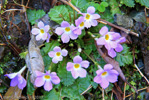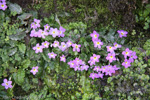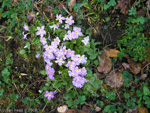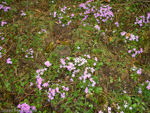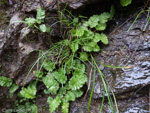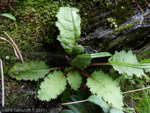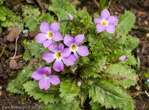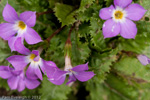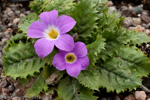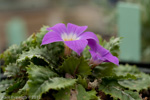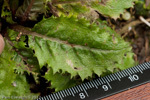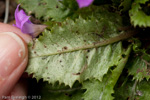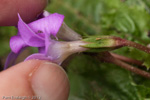Primula sessilis Royle ex Craib
Section Petiolares
Link to Nepal checklist
Type specimen: Many syntypes listed (see protologue) resides at Royal Botanic Garden Edinburgh (specimens E00024634, E00024635, E00024636, E00024637,E00024638,E00024639,E00024640,E00024641,E00024642,E00024643, E00024644) and KEW (specimen K000639659).
Primula sessilis (syn): Roxb. ex Steud.
P. petiolaris var. nana - pro parte (syn): Royle ex Hook., Fl. Brit. Ind. iii. 493.
Epithet: Named for being sessile, no flower scape.
Distribution: NW Himalaya: Kashmir to NW Nepal.
This species has a confusing taxonomic history, being closely allied and included within P. petiolaris (from 1824) until described as distinct in 1917. P. sessilis is from the Western Himalaya, just reaching into Nepal, whereas P. petiolaris is from further East, in Central Nepal. The protologue includes many syntypes though none are indicated as a holotype. P. sessilis is distinguished by the corolla lobes with a central pointed tooth on the rounded apex. However, the toothing may vary so this should not be used as the sole characteristic to determine an identification. Often produces 4 petals instead of the normal 5. It is efarinose, has no flower scape. Leaves are 3-13 cm (including the distinct petiole) at flowering but expand to 20cm in fruit, oblanceolate to ovate, erose-denticulate at the margin, glabrous, efarinose. Flowers, scapeless, on slender pedicels, pale mauve with a yellow eye surrounded by a white zone. Calyx tubular, conspicuously 5 angled, cut to the middle or slightly below into lanceolate , keeled lobes. Tube 3 times the length of the calyx.
